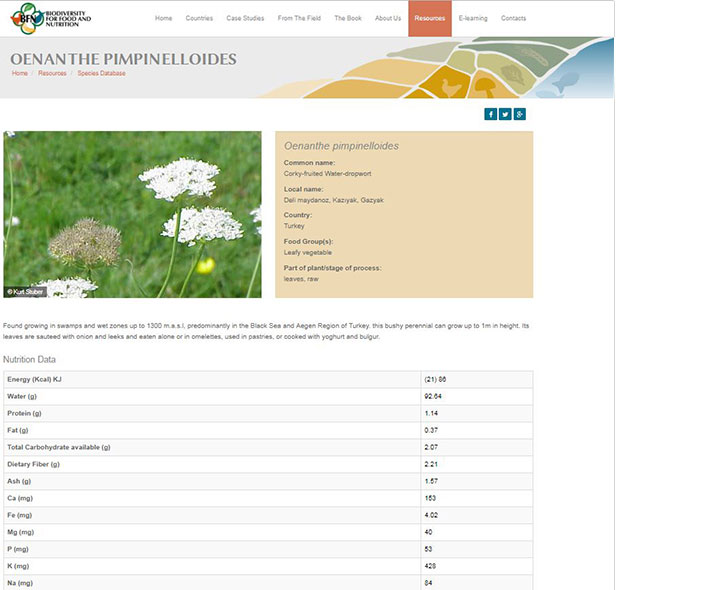Blog Healthy Foods You Haven’t Heard Of (Yet): The Biodiversity for Food and Nutrition Database

A new database compiles nutrition information on over 185 neglected and underutilized food species and varieties, researched by partners of the Biodiversity for Food and Nutrition Project, an initiative coordinated by Bioversity International in Brazil, Kenya, Sri Lanka and Turkey.
Have you tried sherbet made from the Brazilian fruit Yellow Mombin?
Or a Turkish omelet containing Corky-fruited Water-dropwort leaves?
How about a Sri Lankan white curry with Vegetable Hummingbird pods?

These local foods represent neglected and underutilized species that are notable for more than their unusual names – they hold valuable qualities of Vitamin A, beta-carotene and iron, respectively. A single serving of “Yellow Mombin” (Spondias mombin) pulp contains a third of your daily recommended intake of Vitamin A.
Despite contributing to more sustainable and healthy food systems, this tantalizing diversity of leafy vegetables, fruits, tubers, grains, wild edibles and more is at risk of disappearing. Although many of these species have been historically part of indigenous cultures and traditional diets, most people today are simply not aware of their value. Therefore, it is critical to collect pre-existing knowledge and conduct new food composition analyses, to offer a clear evidence base that can ensure continued appreciation, conservation and sustainable use of these natural resources.

Since 2012, the Biodiversity for Food and Nutrition Initiative (BFN Project) has worked with governments, research centres, universities and many other local partners to collect samples, run lab analyses and compile information on local species in Brazil, Kenya, Sri Lanka and Turkey. After seven years of research, this evidence has been collected on the BFN website, as well as in national databases (see related links below). This information is now readily available to decision-makers working to create more nutrition-sensitive production systems.
The database embedded in the BFN website currently displays information for 185 prioritized food species, with entries including nutrition data, common and local names, medicinal uses and links to recipes, when available. There is additional nutrition information available for some species at the variety level, for example, for seven local varieties of Sri Lankan rice.
All data can be easily accessed and downloaded:
About Biodiversity for Food and Nutrition
The Global Environment Facility Mainstreaming biodiversity conservation and sustainable use for improved human nutrition and well-being initiative is led by Brazil, Kenya, Sri Lanka and Turkey and coordinated by Bioversity International, with implementation support from the United Nations Environment Programme (UNEP) and the Food and Agriculture Organization of the United Nations (FAO), and additional support from the CGIAR Research Program on Agriculture for Nutrition and Health.
For more information see: www.b4fn.org
This research is conducted as part of the CGIAR Research Program on Agriculture for Nutrition and Health and is supported by contributors to the CGIAR Trust Fund Donors.
